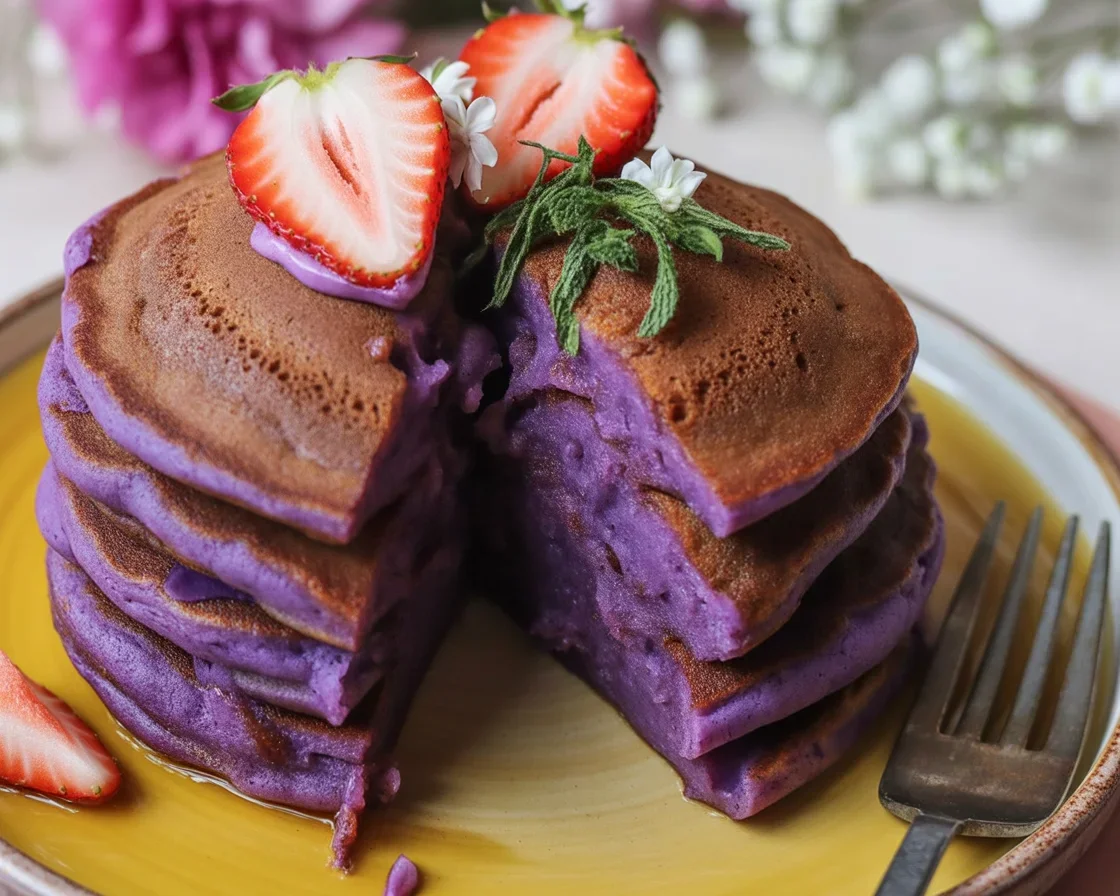Ube Mochi Pancakes are all over my kitchen these days, but I’ve noticed some folks get a bit nervous trying to make ‘em at home. Maybe you’ve got burned bottoms, or they’re a little chewy in the wrong way. Or, let’s be honest, you just want that perfect purple stack you see on fancy café menus. I get it—so let’s talk actual steps, not just pretty pictures. If you want to get creative in the kitchen, don’t forget to take a peek at my favorite sweet treat recipes (they’re loaded with easy-for-everyone ideas) or brush up with this detailed how to make boba pearls guide before you dive in.
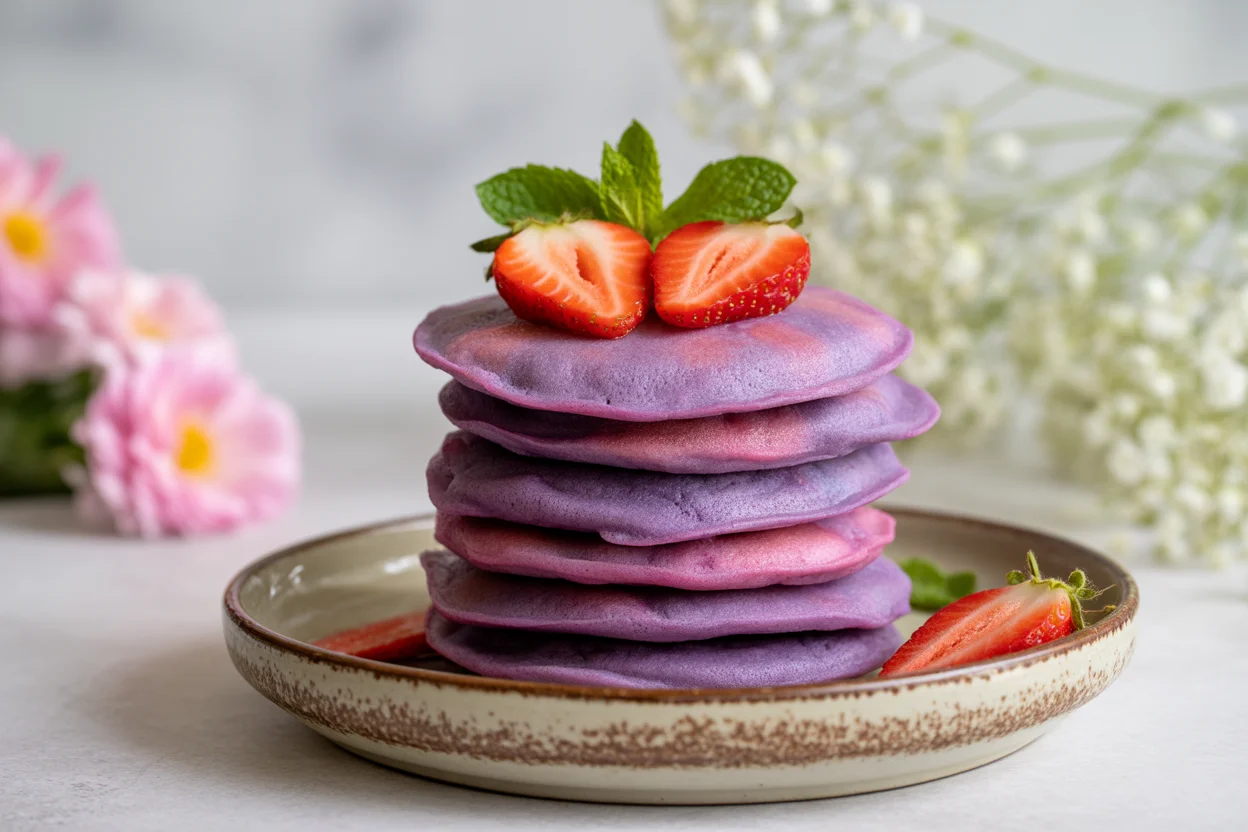
What is ube halaya?
Ever wonder why those pancakes are that wild, almost magical, color? That’s thanks to ube halaya. It’s a creamy purple yam jam, super famous in the Philippines. If you’ve never tried it—it’s kinda floral, kinda nutty, definitely unique. You can find jars of it at Asian supermarkets, or make it from scratch if you’re ambitious (but don’t beat yourself up if you grab it pre-made, trust me). I started using it in mochi pancakes after tasting ube ice cream at a friend’s backyard BBQ and haven’t looked back since. The flavor seeps into every bite, making the whole thing just pop.
“I’d never heard of ube before your recipe and now I’m obsessed. That jam is next-level!” – Jess B.
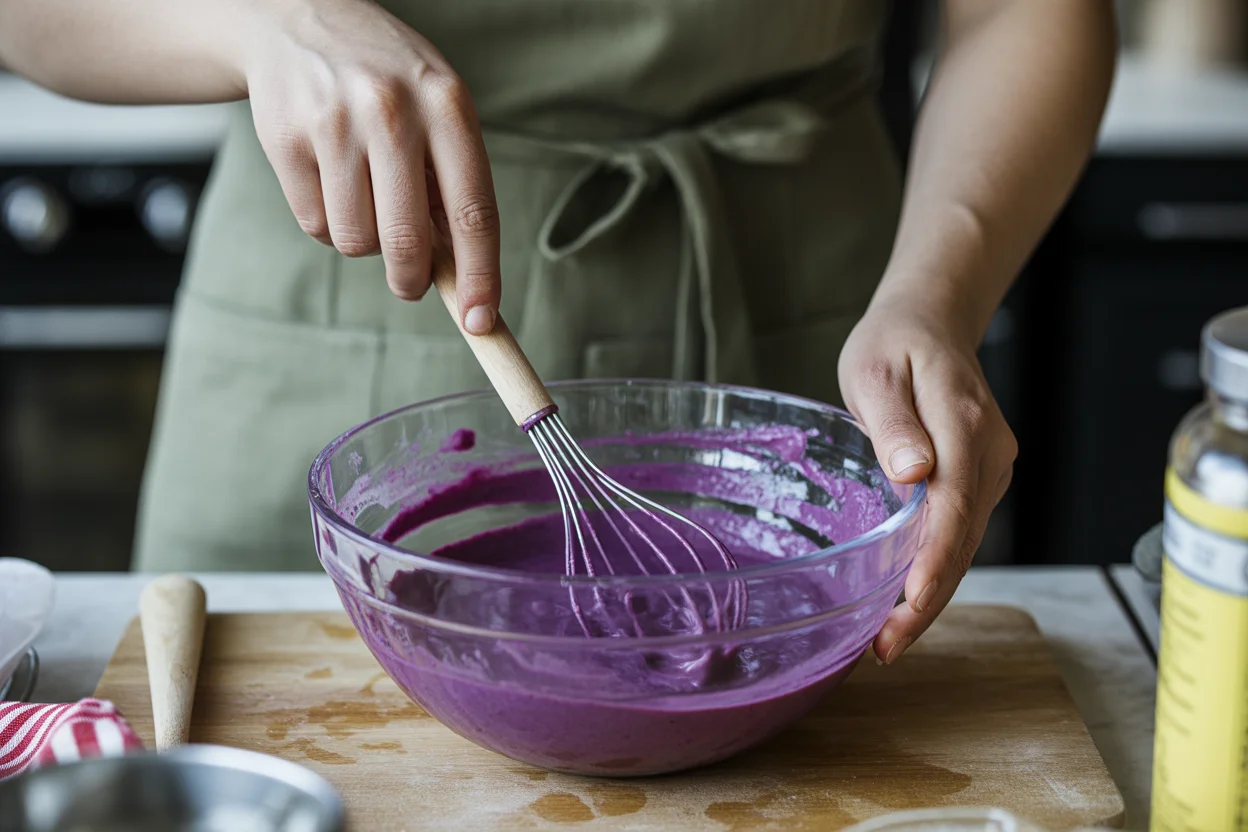
Why I like using sweet rice flour
I’ll admit, at first I tried regular flour. Do not recommend. Sweet rice flour—sometimes called mochiko—is totally what you want for Ube Mochi Pancakes. It turns the pancakes chewy and soft, but not rubbery or weird. Best part? That signature mochi bounce you get when you bite in. Plus, if you’ve ever needed to eat gluten free, this flour is a dream. I found out fast: skip the substitutions here if you want classic mochi pancakes. The texture hits different… and that’s what makes them SO good. Gosh, I’d even put it in cookies if I could.
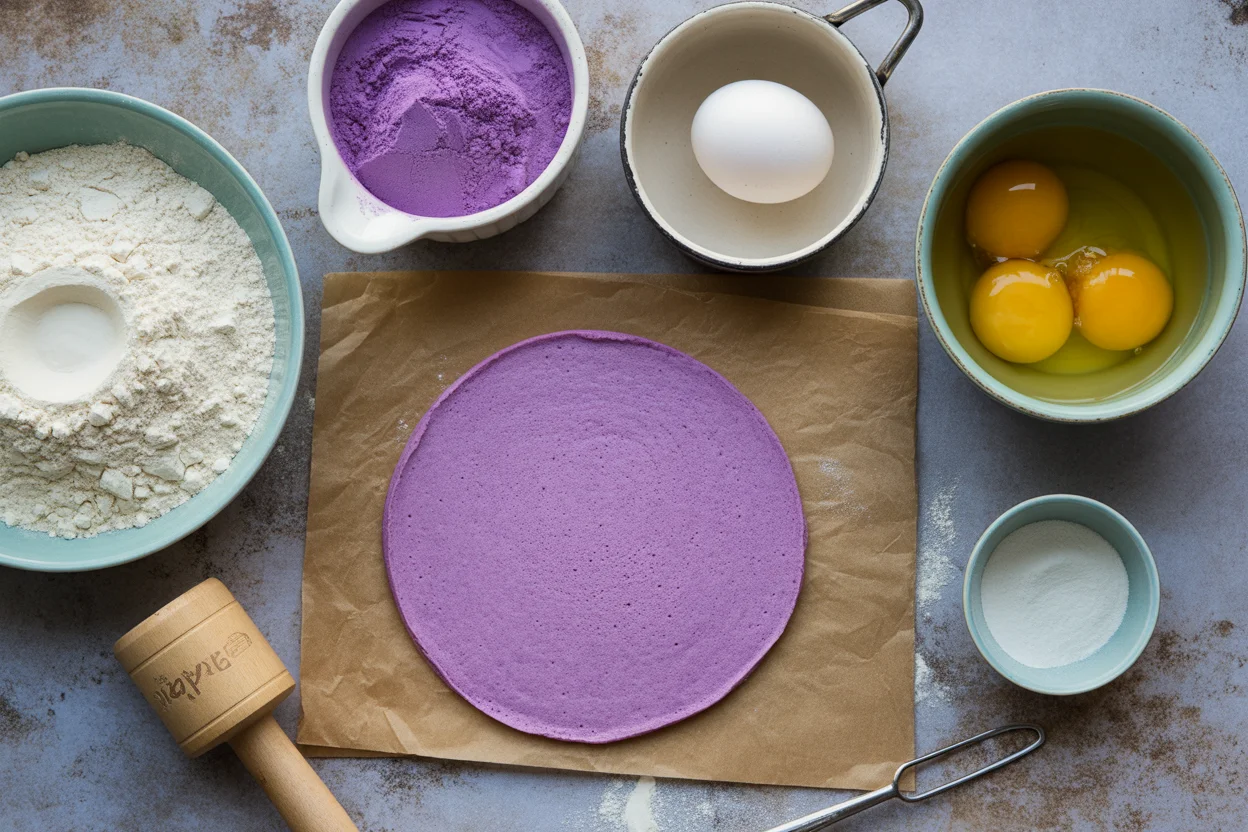
Ingredients, Substitutions & Adjustments
Here’s what you actually need for Ube Mochi Pancakes. (And, you know, a few fixes if you’re short on something.)
- Sweet rice flour: Sticky, chewy, irreplaceable. This is the MVP.
- Ube halaya: Don’t swap for “ube flavor extract” or you’ll miss out on the texture.
- Coconut milk: Adds depth. Almond milk or whole milk can work in a pinch.
- Eggs: Hold it all together. Use a flax egg if you’re going vegan, though the bounce won’t be quite as strong.
- Sugar: Coconut sugar if you’re fancy; white sugar if you’re not.
- Baking powder: For a soft puff.
Truthfully, you can switch up the milk or play around with sugar levels, but the real magic is when you keep the ube and sweet rice flour combo. Dive in messy—pancakes love a little imperfection.
Making my ube mochi pancakes
Let me spill how I do it (with weirdly specific habits included). I whisk eggs and sugar like I’m in a rush, stir in melted ube halaya and coconut milk next, and make sure it’s a bright pastel purple before anything else. Sweet rice flour comes in last—sift it if you want smoothness, but I usually don’t have time. Get a nonstick pan teasingly hot, medium-low, and spoon on some batter. These pancakes spread a bit slower than classic ones. Wait for little bubbles, flip gently, and don’t get distracted by your phone like I sometimes do (burnt mochi smell stays forever).
Tips for perfecting your ube mochi pancakes
Alright, some of these I learned the hard way. Don’t judge.
- Don’t overmix: The more you stir, the denser they get. Lumpy is normal, promise.
- Use slightly lower heat than you would for regular pancakes. High heat zaps all the moisture out.
- Let the batter rest for 5-10 minutes after mixing. That’s when the dreamy mochi bounce shows up, oddly enough.
- Try a light brush of oil on the pan, not a full puddle. Too much fat makes ‘em greasy.
Most days, my kitchen fills up with pancake stacks that are bouncy, purple, and a little wonky looking. That’s part of the charm.
Common Questions
Q: Can I make ube mochi pancakes ahead?
A: Yes, absolutely! They reheat pretty well in a toaster for a quick breakfast.
Q: Where can I find ube halaya?
A: Asian markets for the win—or you can order online if you’re in a smaller town.
Q: What if I don’t have sweet rice flour?
A: You’ll want to wait until you get it, honestly. Wheat flour just doesn’t cut it here.
Q: How do I know when to flip them?
A: Look for little bubbles and the edges starting to firm up. Flip gently since these are more delicate than your average pancake.
Q: Can I freeze extras?
A: Yup! Flash freeze them and pop ‘em in a zip bag for later. Easy peasy.
Ready to Flip Your Own?
Okay, that’s the gist—pretty much everything you need to know to start churning out Ube Mochi Pancakes that are Instagram-worthy but still taste like home. Don’t be intimidated, just get a little messy and don’t fear the purple. For inspiration, click through to Ube Mochi Pancakes – Cooking Therapy or read hilarious reviews from the Ube Mochi Pancake Review : r/traderjoes community, where folks get really, really opinionated about pancake chewiness! You’ll love mastering this. Can’t wait to hear how your next batch pans out.
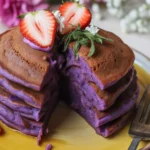
Ube Mochi Pancakes
Ingredients
Pancake Ingredients
- 1 cup Sweet rice flour This is essential for the texture.
- 1/2 cup Ube halaya Do not use ube flavor extract.
- 1 cup Coconut milk Substitutions: Almond milk or whole milk can work.
- 2 large Eggs For a vegan option, use a flax egg.
- 2 tablespoons Sugar Coconut sugar can be used for a fancier option.
- 1 teaspoon Baking powder For a soft puff.
Instructions
Preparation
- In a bowl, whisk together the eggs and sugar until combined.
- Stir in the melted ube halaya and coconut milk until the mixture is bright pastel purple.
- Add the sweet rice flour last, sifting if desired for smoothness.
Cooking
- Preheat a nonstick pan over medium-low heat.
- Spoon batter onto the pan, waiting for little bubbles to form before flipping gently.
- Cook until golden brown on both sides.

